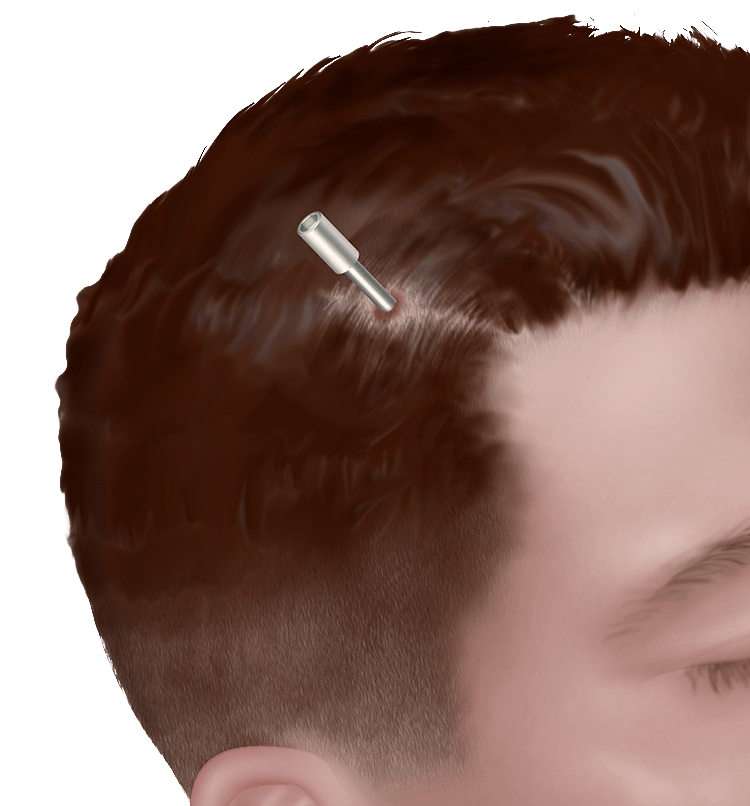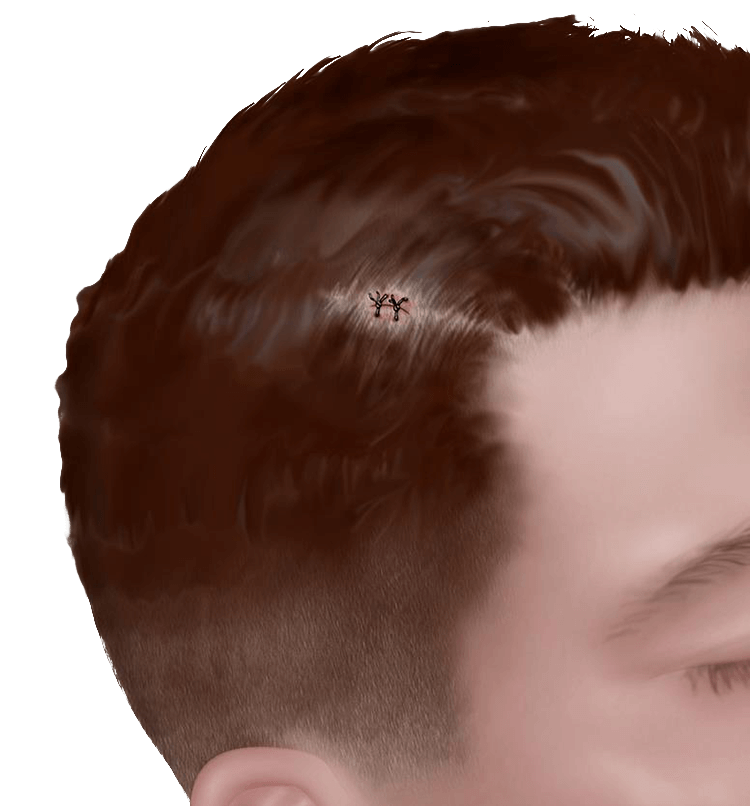
WHAT IS NEUROBLATE®?
MINIMALLY INVASIVE ROBOTIC LASER THERMOTHERAPY
The NeuroBlate® laser ablation system enables doctors to destroy brain lesions with precision and confidence.
Learn more about the procedure today.
With NeuroBlate, the surgeon attempts to ablate lesions in the brain. Unlike traditional brain surgery, a procedure with the NeuroBlate System does not require a large opening in the skull. Instead, doctors create a small hole in the skull, about the diameter of a pencil. While the patient is in the MRI machine, the doctor guides a small laser device (probe) through the hole into the lesion. The probe delivers laser light energy that heats and destroys the affected tissue. Because the NeuroBlate System is MRI-guided, the neurosurgeon is able to visualize the specific area of the brain to be ablated. The precise nature of the procedure helps to lessen the likelihood of harm to nearby healthy brain tissue.1

You will receive anesthesia before the procedure. Your doctor will determine what level of anesthesia is right for you. After the procedure, you will have a stitch or two in the skin where the probe was inserted. You may also have scratches on your head from the device that held your head in position.

NeuroBlate is a minimally invasive surgery, a type requiring only a small opening in the body instead of a large incision as in open surgery.

Minimally invasive procedures are generally well tolerated, have a short recovery time and patients go home with 1-2 stitches.
Each patient is unique. Your doctors are the best qualified to describe specifically how a procedure may affect your outlook.
Monteris devices are used by neurosurgeons, which allows them to hold the patient’s head steady while in an MRI machine and during brain surgery, to allow minimally invasive and stable access for brain probes, and to heat and destroy targeted tissue. Patients must be able to undergo MRI exposure.
All brain surgeries carry risk. Possible adverse events include, but are not limited to, bleeding, edema, unintended major brain tissue damage, and permanent neurological deficits. Discuss with your physician the potential benefits and risks.
NeuroBlate System. Patient Brochure
Disclosures
The NeuroBlate System is a surgical tool used in brain surgery to heat and destroy targeted brain tissue associated with tumors, radiation necrosis, or epilepsy. Patients must be able to undergo MRI exposure. All brain surgeries carry risk. Possible adverse events include, but are not limited to, bleeding, edema, unintended major brain tissue damage, and permanent neurological deficits. Discuss the potential benefits and risks with your physician.
Rx Only.
1. Rennert RC, Khan U, Barktek J Jr et al. Laser Ablation of Abnormal Neurological Tissue Using Robotic Neuroblate System (LAANTERN): procedural safety and hospitalization. Neurosurgery. published online: May 11, 2019. (doi: 10.1093/neuros/nyz141)